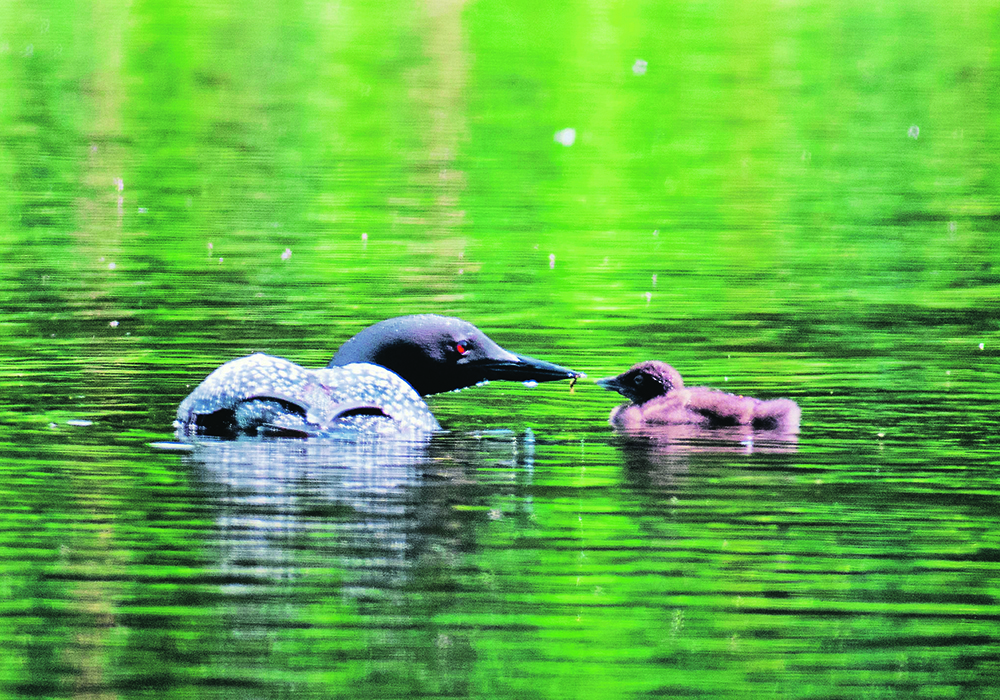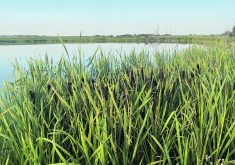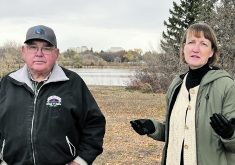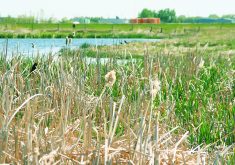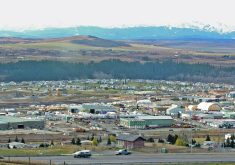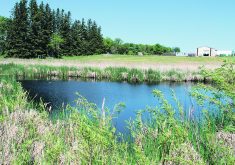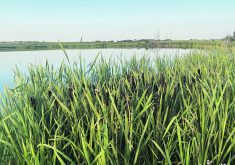First step to new rules related to draining and other management of soggy land is proper identification
Identifying a wetland on farmland seems straightforward.
It’s part of the field where there is water, bulrushes and ducks.
However, like many things in life, it’s not that simple.
There are five classifications of wetlands and separating a Class 2 wetland from a Class 3 can be complicated. That distinction is particularly important in Manitoba, because the province has new regulations for draining and managing wetlands, based on the classification of the wetland.
That’s why Ducks Unlimited has published a guide to help.
Read Also

Farming Smarter receives financial boost from Alberta government for potato research
Farming Smarter near Lethbridge got a boost to its research equipment, thanks to the Alberta government’s increase in funding for research associations.
“It became apparent that landowners will have to identify the classes of wetlands. That’s probably not something that many of them will have knowledge of,” said Mark Francis, Ducks Unlimited manager of provincial operations for Manitoba.
In October, the Manitoba government announced changes to Water Rights Act regulations. The new rules streamline the approval process for managing small and temporary wetlands, known as Class 1 and 2.
The province also adopted a “no net loss” approach to wetlands.
Landowners who drain a wetland (such as a Class 3) will have to compensate the province or mitigate the loss of the wetlands. They could pay for the construction of a similar wetland or establish a new slough on their own property.
However, the province decided that landowners cannot drain Class 4 or 5 wetlands. Those are sloughs that have semi-permanent or permanent ponds.
It is possible to distinguish between wetlands, but it may require some study and practice.
“It’s somewhat complicated. But there is a system that you go through,” Francis said from his home near Baldur, Man. “From the guide, you can look at vegetation, the design of the wetland, the open water zone… what type of vegetation is there. It’s possible for people to learn and that’s why we thought the guide would be useful.”
In addition to the new regulations, Manitoba also has a new wetlands program. Last June, the province created a $52 million endowment fund called GROW (Growing Outcomes in Wetlands), where farmers are paid for preserving wetlands and other environmental projects.
To access those funds, farmers need to know if their wetland qualifies for GROW funding or not.
The Ducks Unlimited wetlands identification guide can be found at www.ducks.ca/resources/landowners
Wetlands classification
- Class I: Ephemeral wetlands typically have free surface water for only a short time after snow melt or storms in early spring.
- Class II: Temporary wetlands are periodically covered by standing or slow-moving water. They typically have open water for only a few weeks after snow melt or several days after heavy storms. Water is retained long enough to establish wetland or aquatic processes.
- Class III: Seasonal ponds are characterized by shallow marsh vegetation, which generally occurs in the deepest zone. They are usually dry by midsummer.
- Class IV: Semi-permanent ponds and lakes are characterized by marsh vegetation, which dominates the central zone of the wetland, as well as coarse emergent plants and submerged cattails, bulrushes and pond weeds. These wetlands frequently maintain surface water throughout the growing season.
- Class V: Permanent ponds and lakes have open water in the central zone, which is generally devoid of vegetation. Plants in these wetlands include cattails, red swamp fire and spiral ditch grass.




